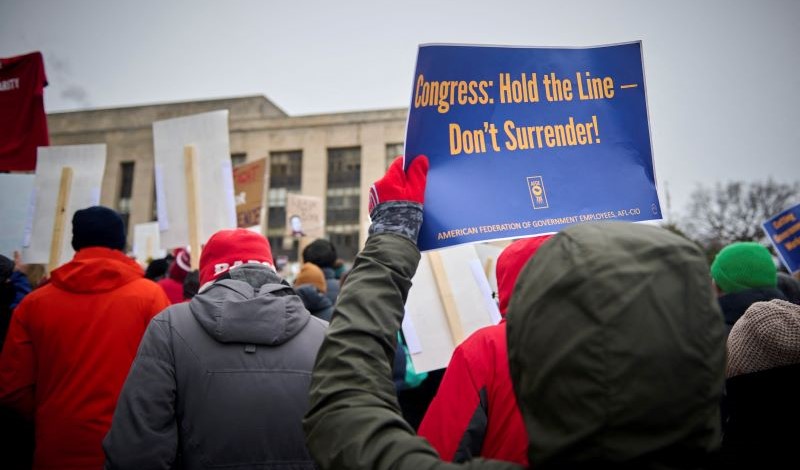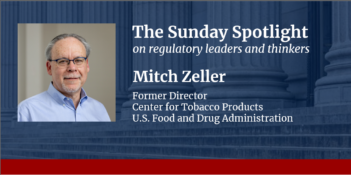
President Trump’s recent executive orders challenge Congress’s role in creating policy.
The U.S. Constitution gives the U.S. Congress the power to legislate. Often, Congress sets general policies and gives agencies discretion over how to implement them, but Congress is still in the driver’s seat. Presidents may see things differently. They may envision themselves as policymakers-in-chief, with statutes either providing blank checks for their use or inconvenient barriers to their plans. In his second term, President Donald J. Trump seems to be following an extreme version of this vision—just when the U.S. Supreme Court has been reinforcing Congress’s role as the primary policymaker.
Although the Supreme Court is skeptical of the administrative state, the justices are also skeptical of unbridled presidential policymaking. In his concurring opinion in West Virginia v. EPA, Justice Neil Gorsuch portrayed the risks associated with views like President Trump’s. Justice Gorsuch—joined by Justice Samuel Alito—worried that if the executive branch were allowed too much discretion, legislation would in effect “risk becoming nothing more than the will of the current President, or, worse yet, the will of unelected officials barely responsive to him.” Justice Gorsuch also presciently pointed to other risks of unlimited executive discretion, noting that “stability would be lost, with vast numbers of laws changing with every new presidential administration” and “rather than embody a wide social consensus and input from minority voices, laws would more often bear the support only of the party currently in power.” Justice Gorsuch closed by saying, “in our Republic, ‘it is the peculiar province of the legislature to prescribe general rules for the government of society,’” quoting an opinion by Chief Justice John Marshall. President Trump seems to think otherwise.
According to some observers, President Trump believes that his policies override legal restrictions. But the position he takes in his executive orders is less extreme. Presidential policies are controlling except when they collide with clear statutory mandates. This argument corresponds to a somewhat simplistic—potentially caricatured—view of the Chevron doctrine as allowing open-ended discretion unless unmistakably contravened by statutory language.
President Trump’s funding freezes reflect his view of presidential primacy in policymaking. One of President Trump’s first executive orders froze all funding appropriated under the Infrastructure Investment and Jobs Act and the Inflation Reduction Act of 2022 until the funding could be reviewed for consistency with Administration policy. The executive order aims “to ensure that no Federal funding be employed in a manner contrary to the principles outlined in this section, unless required by law.”
Novel funding conditions have similar phrasing. One executive order directs agencies to eliminate school funding for what the President terms “gender ideology and discriminatory equity ideology” or for supporting the “social transition” of a student, such as modifying a student’s pronouns, “to the maximum extent consistent with applicable law.” Note that the President—not Congress—is viewed as the source of policy, so that the law is only significant if it gets past an insuperable obstacle.
Similarly, President Trump has imposed a lengthy freeze on enforcement of the Foreign Corrupt Practices Act. Any new enforcement guidelines should “prioritize American interests, American economic competitiveness with respect to other nations, and the efficient use of Federal law enforcement resources.” The order does not contain a word about furthering the anti-corruption policies that the statute itself embodies.
Another example involves regulations governing environmental impact statements. In calling for new agency regulations, President Trump directed officials to focus on Administration priorities. He stated in a recent executive order that “consistent with applicable law, all agencies must prioritize efficiency and certainty over any other objectives, including those of activist groups, that do not align with the policy goals set forth… in this order or that could otherwise add delays and ambiguity to the permitting process.” Apparently, regulations implementing a statute called the National Environmental Policy Act—note the mention of the environment in the statute’s name—are supposed to give decisive weight to non-environmental interests whenever legally permissible. Thus, President Trump seems to view the statute as giving the Administrative complete discretion as to how to implement NEPA so long as it does not violate clear statutory restrictions.
In the introduction, I compared Trump’s view of executive discretion to a somewhat simplistic view of the Chevron doctrine as allowing open-ended discretion unless unmistakably contravened by statutory language. At that point, informed readers must have been shaking their heads and thinking, “But Chevron has been overruled.” If so, they were right in thinking that Trump’s vision is at odds with the Supreme Court’s decision in Loper Bright Enterprises v. Raimondo, which overruled Chevron. That decision is partly about the role of courts, but it also embodies a conception of the role of Congress vis-à-vis the executive branch. The Court pointed to two situations in which it would give weight to an agency’s interpretation of a statute. The first situation involves a delegation of authority to the agency to determine how the statute applies to specific facts. As the Court explained:
When the best reading of a statute is that it delegates discretionary authority to an agency, the role of the reviewing court … is, as always, to independently interpret the statute and effectuate the will of Congress subject to constitutional limits. The court fulfills that role by recognizing constitutional delegations, “fixing the boundaries of the delegated authority,” and ensuring the agency has engaged in “reasoned decisionmaking” within those boundaries.
As to what reasoned agency decision-making normally entails, the Court has said that judges “must consider whether the decision was based on a consideration of the relevant factors and whether there has been a clear error of judgment.” The relevant factors presumably include statutory policies, not just presidential priorities. The Court also explained, in the leading decision on the subject, that “an agency rule would be arbitrary and capricious if the agency has relied on factors which Congress has not intended it to consider.” That rule must encompass presidential policies completely unrelated to—or worse, contrary to—the statute itself.
In the second situation identified by the Court, there is no delegation of discretion to the agency, either explicit or implied. In that situation, courts independently interpret the statute’s application. But under what is called Skidmore deference, courts may “seek aid from the interpretations of those responsible for implementing particular statutes.” Notably, it is the implementing agency’s interpretation that is given respectful consideration here, not the President’s. Thus, the effort in a recent executive order to override agencies’ legal judgments may be counterproductive.
The same delegation concept underlies the major question doctrine, which requires clear congressional authorization before an agency may regulate on issues of vast economic and political significance. As the Court explained in West Virginia, the Court will not infer a delegation of power to an agency to make decisions of great magnitude because of “separation of powers principles and a practical understanding of legislative intent.” The goal is to maintain congressional primacy rather than allowing the executive branch to take over the most momentous decisions.
The Court’s conservatives unanimously joined the Court’s decisions in Loper Bright and West Virginia. A cynic might argue that their emphasis on congressional primacy was limited to Democratic presidents. We should soon see whether they were serious about what they said in those opinions.




